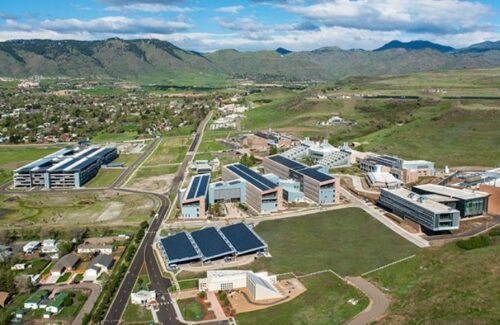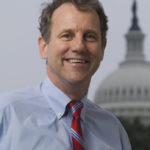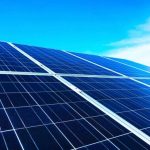NREL launches Net Zero Labs program with four locations

An aerial view of NREL’s South Table Mountain Campus outside Golden, Colorado. Photo by Joshua Bauer, NREL.
Emissions from the Flatirons Campus of the National Renewable Energy Laboratory (NREL) will become an artifact of the past by the close of the next fiscal year. The ambitious plan announced Wednesday by Energy Secretary Jennifer Granholm served as the pilot launch of the Net Zero Labs initiative, which involves four of the Dept. of Energy’s 17 laboratories.
Martin Keller, director of NREL, said he expects the Flatirons Campus near Boulder, Colorado, will reach net zero emissions annually by the end of fiscal year 2023 and the South Table Mountain Campus outside Golden, Colorado, to hit that achievement three years later. That means that on an annual basis, NREL will eliminate or offset all greenhouse gas emissions to achieve carbon neutrality.
“Our participation in the Net Zero Labs initiative will model how laboratories, academia, businesses and communities can successfully decarbonize smart campuses,” Keller said. “It will show that large, complex, energy-intensive organizations can achieve carbon neutrality, despite the many challenges.”
Granholm announced that in addition to NREL, the Net Zero Labs pilot will include the National Energy Technology Laboratory, the Pacific Northwest National Laboratory, and the Idaho National Laboratory. The pilot will be expanded to the other national laboratories in FY23.
Keller predicted the Flatirons Campus will be “the first campus in the entire Department of Energy complex to reach this milestone.”
“This is not going to be an easy task to get to net zero,” Granholm said during a visit to the Flatirons Campus. She announced an initial $38 million that will fund the pilot initiative and added, “It’s going to take a lot more money.” Even so, the secretary said, the breakthroughs she expects each of the laboratories to make as they move toward net-zero campuses “will be an example they will set for others.”
Reducing carbon dioxide emissions can help with the ongoing issue of climate change, which has caused glaciers to melt, sea levels to increase and temperatures to rise. The United States has pledged to cut emissions in half by 2030.
Net-zero emissions target covers three areas
The wind turbines rising from the grounds of the Flatirons Campus are visible from miles away. Less visible are the arrays of the solar panels that dot the 305-acre site. The two sources of renewable energy generate enough electricity that NREL is able to regularly send power to the electrical grid operated by Xcel Energy. When the campus needs to purchase electricity, NREL buys energy produced from Xcel’s wind farms through the utility’s Windsource program.
“We could just buy enough Windsource to cover everything and say we did it, we’re done, but that’s not what we’re trying to achieve here,” said Sheila Hayter, co-lead of NREL’s Net Zero Labs program. “What we’re trying to achieve here is truly to have net-zero-emissions operations.”
The emissions are in three categories. Scope 1 covers direct emissions from sources NREL owns or controls, including its fleet of vehicles. Scope 2 is indirect emissions from purchased electricity and heating. Scope 3 is indirect emissions from doing business, including employees commuting. The breakdown of greenhouse gas emissions in FY20 for NREL’s two campuses were 10% from Scope 1, 70% from Scope 2, and 20% from Scope 3.
Hayter said buying carbon offsets or renewable energy certificates to cover all emissions would merely defeat the purpose of the program.
“Our strategy for being net zero is not just to buy, but our strategy is actually to minimize our Scope 1 and Scope 2 emissions to the point where we have almost none left, and we think we can do that.”
NREL developed a road map to reach its goals in meeting the Net Zero Labs challenge. In eliminating Scope 1 emissions, for example, the plan calls for ending the use of natural gas on the two campuses and so heating will be provided through the potential combination of electric, geothermal, ground source heat pumps, and energy heat recovery for all new buildings. Part of the Scope 2 plan focuses on both on-site and off-site renewable energy generation.
Neither the Flatirons Campus nor the 327-acre South Table Mountain Campus has enough space to add enough additional solar panels to solve the emissions problem, although additional solar will be part of the solution.
The road map calls for:
- Installing energy storage to capture the production of renewable energy for later use
- Converting the fleet of vehicles to battery or hydrogen powered
- Replacing generators with carbon-free backup power technologies, such as stationary batteries, biofuel-based generators, and hydrogen fuel cells.
How quickly NREL will be able to meet its goals will depend to a large degree on funding. The Biden administration has included in its budget for FY23 $58 million for the entire Net Zero Labs initiative, which covers the 17 national laboratories. Hayter said that will not be enough, but it will help.
“We definitely could do some of the things that are lower cost and high on our list and make some good strides to show right away that we’re making a difference,” she said.
Read NREL’s roadmap to reaching net zero emissions.
News item from NREL
<!–
–>
Original Source: https://www.solarpowerworldonline.com/2022/05/nrel-launches-net-zero-labs-program-four-locations/













